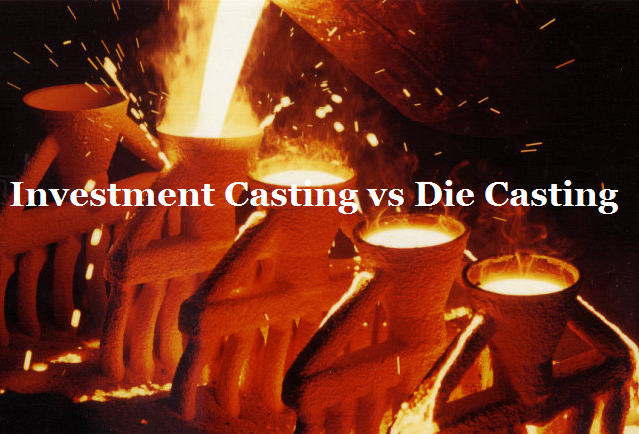
Die casting and investment casting are two distinct metal casting processes, each with its own set of characteristics and applications. Here are the key differences between die casting and investment casting:

Die Casting: Die casting involves injecting molten metal into a steel mold cavity under high pressure. The mold, also known as a die, is typically made of two halves and is precisely machined to form the desired part shape.
Investment Casting: Investment casting, also known as lost wax casting, involves creating a wax pattern of the desired part, coating it with a ceramic slurry, and then melting the wax out to leave a cavity. Molten metal is then poured into the cavity to form the final part.
Die Casting: Die casting is well-suited for producing parts with complex geometries and thin walls. It is capable of producing intricate shapes with high dimensional accuracy.
Investment Casting: Investment casting is particularly suited for producing highly intricate and detailed parts, including parts with fine features, undercuts, and internal cavities.
Die Casting: Die cast parts typically have excellent surface finish and can be produced with very tight tolerances. The surface finish is smooth and often requires minimal post-processing.
Investment Casting: Investment cast parts also have good surface finish, but they may require additional finishing processes such as polishing or machining to achieve the desired surface quality.
Die Casting: Die casting is commonly used for non-ferrous metals such as aluminum, zinc, and magnesium alloys, although some ferrous metals can also be die cast.
Investment Casting: Investment casting can be used with a wide range of metals, including aluminum, stainless steel, carbon steel, bronze, and exotic alloys.
Die Casting: Die casting is generally more cost-effective for high-volume production runs due to its high-speed production capabilities.
Investment Casting: Investment casting is more suitable for low to medium volume production runs, as it involves more labor-intensive processes and longer production times.
In summary, while both die casting and investment casting are used for producing metal parts with high precision, they differ in terms of process, complexity of parts produced, surface finish, materials used, and cost-effectiveness for different production volumes. The choice between the two processes depends on the specific requirements of the part and the desired production volume.
If you have any further questions about die casting or investment casting, please feel free to contact us.